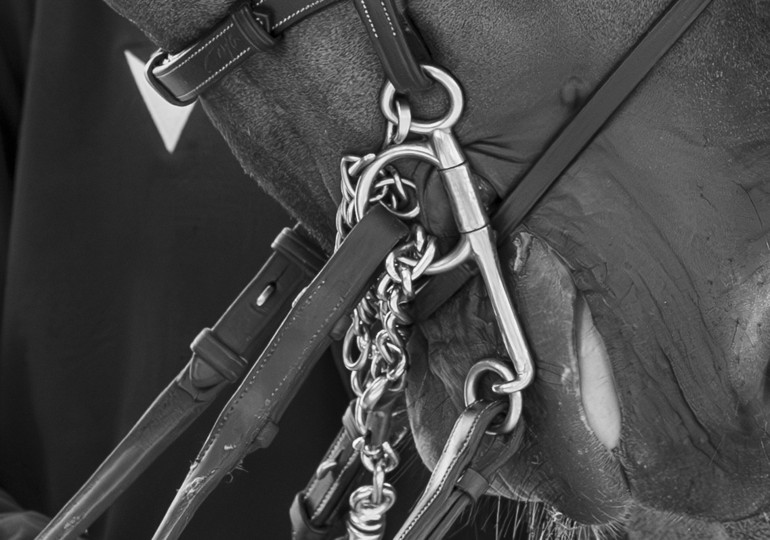Text © World of Showjumping
At the FEI World Cup™ Finals 2025 in Basel, Switzerland, the organising committee and the German horse welfare group R-Haltenswert launched a pilot project – the Equine Quality Control (EQC). R-Haltenswert – a movement founded by Viktoria Auracher and André Hascher – promotes animal welfare, ethical values and sustainability in equestrian sport. Announcing the initiative, Thomas Straumann – chairman of the FEI World Cup™ Finals 2025 organising committee – stated: “We want to offer our main players, the horses, the best conditions so that they feel comfortable with us. This also means that we take a close look, strictly monitor compliance with the rules and report any misconduct and punish it with the means available to us as organisers.”
R-Haltenswert received a mandate from the organisers of the FEI World Cup™ Finals, which was based on the standards of quality management customary in companies and institutions. The mandate gave R-Haltenswert the possibility to observe and record the activities at the venue, including the exercise and warm-up areas, and – if necessary – contact the responsible FEI officials in case of any urgent concerns.
R-Haltenswert has now published a report that summarises their work in Basel, which highlights several concerns. “The greatest danger to the urgently needed observance of the welfare of the horses is the belief that enough has already been done to achieve this,” the German group reports.
Observing the behaviour of all stakeholders
Three representatives from R-Haltenswert were present in Basel, observing not only the jumping horses, but all horses present for the FEI World Cup™ Finals 2025 – which also included dressage and vaulting. The representatives are according to R-Haltenswert “(…) master of horse management with different equestrian biographies who are committed to the preservation and development of ethics in equestrian sports.”
The three representatives observed in person. Additionally, cameras were installed in the warm-up arena adjacent to the competition arena, as well as in a second warm-up and in a lunging ring in the close proximity of the stables.
The representatives were introduced to the FEI's senior officials working onsite in Basel, and were informed that the FEI officials present would handle any possible concerns being raised. It was agreed that in case of any remarks, riders were not to be approached directly by the R-Haltenswert representatives. Instead, any concerns were to be communicated via a group chat with the FEI officials.
“Unfortunately, even at the express suggestion, we were not allowed to attend the meeting with the riders to present the project or ourselves,” R-Haltenswert writes in their report. “This was not desired by the FEI and instead communicated to the riders without our presence and led, as it turned out in the further course of the tournament, to great mistrust on the part of the athletes and also on the part of the individual stewards responsible for the warm-up tents.”
Excessive bridling
In the summary of each discipline, R-Haltenswert notes how the “(…) handling of the show jumping horses initially seemed more relaxed and tolerant compared to the dressage horses.”
However, excessive bridling – such as the use of lever bits, leather straps, martingales and draw reins – raised concerns among the R-Haltenswert representatives in Basel. “The conspicuously frequent use of corrective reins, elaborate bridles and lever bits has remained impressive,” the report details. “Draw reins were used for walking, working the horses, as well as exam preparation including jumping up to maximum dimensions.”
“From our point of view, the use of draw reins in general, but especially in combination with lever bits, represents a considerable safety risk for horse and rider and should be rejected as a whole,” R-Haltenswert continues, noting how the tack they observed was within the framework of the current FEI rules and regulations. “From an ethical point of view, the horse, in its nature as a moving and fleeing animal, must not be brought into a forced position by means of a mechanical lever, thereby impairing the neck as the natural balancing bar, and as a result putting horse and rider in a not inconsiderable danger over the jump,” the report states.
Lack of regulations
The use of such tack that R-Haltenswert refers to is regulated in the FEI Jumping Rules article 257.
Bits and nosebands are regulated by the FEI Jumping Rules article 257.1.4, which states: “There are no restrictions on bits or nosebands. However, the Ground Jury has the right, based on veterinary advice, to forbid the use of a bit or noseband that may cause injury to the Horse.” Draw reins are per article 257.1.5 allowed, apart from in the competition arena – with the exception being prize giving ceremonies and march-past parades. Only unrestricted running martingales are allowed, as regulated in article 257.1.3.
To bring clarity as to which tack is allowed to be used at FEI competitions and help the equestrian community navigate the current FEI rules and regulations, the FEI Tack App was launched in May 2023. The tack app is aimed at providing information on allowed and prohibited tack and equipment in FEI competitions, and as an example it lists various bits and nosebands that can or cannot be used in different disciplines. However, updates to the FEI Tack App were temporarily paused in April 2024 until the conclusion of the 2024 Olympic Games in Paris, as keeping up with the monthly updates proved challenging.
“The lack of regulations in show jumping in this regard is incomprehensible to us, but rather frightening,” R-Haltenswert points out in their report about the FEI Jumping Rules regarding equipment and tack. “It seemed like a comfortable, desensitized and cultureless way of dealing with horses when the mobile phone attracts the full attention of the person sitting on the horse during a walk on draw reins, or this finds its culmination in the fact that a conversation was held via the mobile phone during an entire riding session (also on draw reins) outside of the direct test preparation, which was wedged in the riding helmet, a brutalization of good morals.”
“This show jumping sport practiced in this way gave us the impression of a microcosm that has completely forgotten or now actively ignores the responsibility and obligation it has towards the horse, but also towards the external image of equestrian sport itself,” R-Haltenswert notes about their observations in Basel.
A subject of rejection
Notably, the lack of regulations in the FEI Jumping Rules when it comes to bits and nosebands has been highlighted by different FEI stakeholders on previous occasions of annual FEI rule revisions. However, the proposals that have been made to rule changes have for various reasons been rejected by the FEI.
In 2023, the International Jumping Officials Club (IJOC) stated how the acceptance of non-friendly horse tack is a norm which needs to be better regulated. The IJOC consequently suggested to modify the FEI rules regarding nosebands “(…) in response to the horse community and in compliance with horse welfare.” The IJOC-proposal – proposed to be voted on at the FEI Hybrid General Assembly in November 2023 – received support from the German, Norwegian and Swedish national federations, while a similar proposal was put forward by the Irish national federation.
However, despite the concerns raised by its officials and national federations, the FEI responded that it would work on the rules for tack and equipment following a wider consultation for the next revision or full revision of the rules – referring to the FEI database for tack, equipment and dress as well as the Jumping Rules article 257.1.4 as sufficient regulation for items that may cause injury to the horse.
Furthermore, in 2024, the German Equestrian Federation proposed a change to the FEI Jumping Rules article 257 regarding saddlery, explaining that: “With the ongoing challenges of the public perception regarding horse welfare issues, we appreciate the FEI’s stance on tack use that states that everything is allowed if it does not compromise the horse’s welfare. We also commend the provision of the Tack, Equipment and Dress Database. In practice, however, we have found that the Stewards are experiencing this approach difficult to enforce, as it can leave too much room for interpretation and does not provide them sufficient authority.”
The German proposal, which outlined a list of allowed bits, bridles and nosebands to leave less room for discussion and more authority for the stewards, was rejected by the FEI with reference to moving the discussion forward to the full revision of the Jumping Rules which takes place this year.
Additionally, the use of mobile phones while mounted was specifically addressed by the Dutch Equestrian Federation in 2023. The Dutch national federation suggested to ban the use of phone by hand while on a horse at FEI events, only allowing hands-free calling via earphones. The Dutch received support from the German, Norwegian and Swiss federation, but the proposal was rejected by the FEI with reference to how the stewards can warn riders if their behaviour is unsafe.
Administration of established habits
“We continue to see the dangers of abuse in many ways and the need to increase the speed at which rules are questioned, reviewed and adapted,” R-Haltenswert explains in their overview of what they witnessed at the FEI World Cup™ Finals 2025 in Basel. “Based on the impressions on site, the practical implementation of the FEI seemed to us more like an administration of established habits and increasingly threatens to lose credibility by the fact that existing rules are not sufficiently implemented in the interests of the horses, but also by the fact that there is too little rule consistency between the disciplines, as well as international (FEI) and national rules (FN).”
“We would like to see a federation that manages less reactively, but proactively - with a clear corporate philosophy that focuses on the horse and a transparent, self-confident and professionally sound communication strategy,” they point out. “From this, the bridge between aspiration and reality can be made possible - and the mediation of both internally and externally. The marketing strategy "be a guardian" aims to convey this character, but it is still doubtful whether the intention can be exemplified by the FEI officials and internalized by all stakeholders.”









